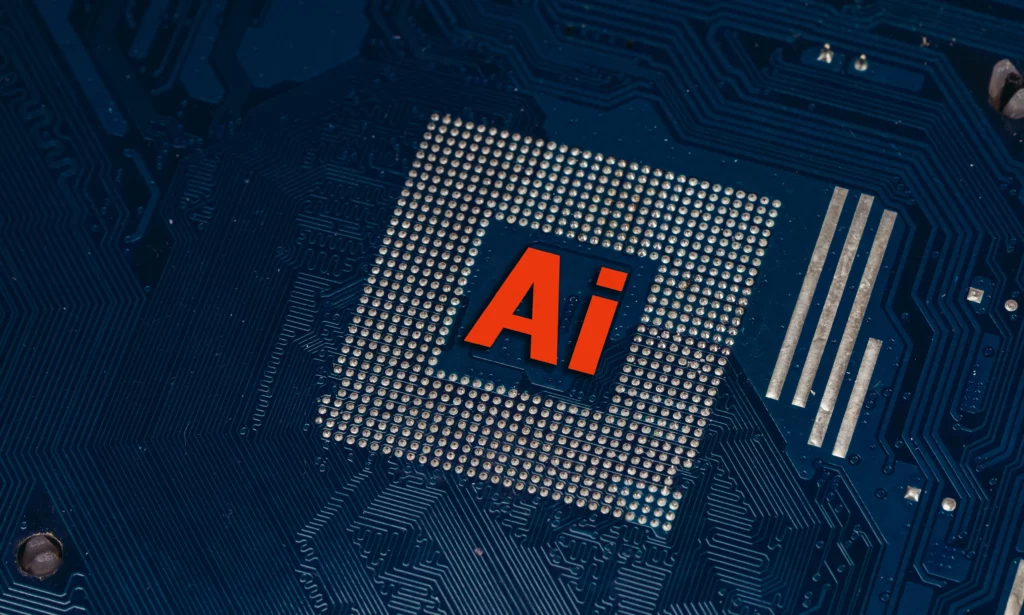Generative ai vs discriminative ai models differ fundamentally in how they handle data. Generative models study the trends of data and can generate new content. Discriminative models are learnt to categorize or label input data. As an example, generative models construct joint probability distributions and generate new data points (e.g. images or text), whereas discriminative models are concerned with predicting labels or probabilities of each input. Generative AI has experienced a fast development; as an example, almost 40 percent of adults in the United States had used a generative AI tool by August 2024. This boom explains the importance of knowing these two strategies.

Differences Between Generative AI and Discriminative AI
Definition
Discriminative models aim to distinguish between classes in data. They learn decision boundaries to assign class labels based on input features. Practically, such models as Support Vector Machines, decision trees, random forests and logistic regression belong to this category. These models directly represent the conditional probability P(Y|X)P(Y|X)P(Y|X) of a label YYY on the condition of the input XXX. Generative models on the other hand learn the entire data distribution. They learn patterns in the data (i.e. P(X,Y)P(X,Y)P(X,Y) or P(X|Y)P(X|Y)P(X|Y)) and then apply that information to produce new examples that are similar to the training examples. Examples of common generative models are GANs, variational autoencoders (VAEs), diffusion models, autoregressive models and hidden Markov models.
Key Characteristics
- Objective: Generative models are designed to generate or generate new data. They are taught the process of data generation to be able to generate new outputs. Discriminative models are used to separate or categorize data into labels; they are used to learn the boundary between classes.
- Probability Distribution: Generative models are trained on the joint probability P(X,Y)P(X,Y)P(X,Y) of features and labels. They frequently include it in P(X 0 Y)P(X 0 Y)P(X 0 Y) and P(Y)P(Y)P(Y) with the Bayes theorem. Discriminative models do not model the full input distribution, but instead just learn the conditional probability P(Y|X)P(Y|X).
- Output: Generative models are capable of generating new outputs (images, text, audio, etc.). The results of discriminative models are class labels or probability scores of each input. As an example, a discriminative model could label an image as a dog or cat without creating new images.
- Complexity & Training: Generative models are more complex. They need bigger datasets and more calculations since they need to model the overall data distribution. GANs or large language models can be trained in a very resource-intensive way. Discriminative models tend to be easier and quicker to train.
- Interpretability: Generative models can give information about the way data is produced. This can be used to interpret data structure. Discriminative models are a direct mapping of inputs to outputs and hence are simple to implement.
- Example Models: Typical generative models are GANs (Generative Adversarial Networks), VAEs and diffusion models. Generative Large language models (e.g. GPT-4) and other foundation models are also generative. Discriminative models include logistic regression, SVMs, decision trees, random forests, neural networks (like BERT when used for classification).
Pros and Cons
- Generative Models: Pros: They are able to generate new data, as well as to deal with missing or incomplete inputs by modeling the entire distribution. As an example, GANs will produce realistic images in art or data augmentation. These models are able to learn unlabeled data and do things such as anomaly detection. Cons: They are computationally and data-intensive to train. Training is unstable (in GANs), and such models are not as accurate on pure classification problems as discriminative models. Generative models also have the risk of generating biased or nonsensical results in case the training data is not perfect.
- Discriminative Models: Pros: These tend to be more accurate on prediction problems and less training data and computation are required. They are simpler to train and are more likely to converge due to their narrow scope of attention to decision boundaries. These models have been strong in numerous applications in the real world (spam detection, image recognition, etc.). Cons: They are incapable of producing new data and are weak at handling missing inputs – when features are not provided, a discriminative model cannot have a way of guessing them. Discriminative models can overfit in case of limited or noisy data, and do not give much information about the underlying data distribution.
Applications and Use Case
Generative and discriminative models are used in different applications. Creative and data-centric work is performed by generative models. As an example, GANs are commonly applied to image generation (e.g., art or deepfakes), and large language models such as GPT can be used to generate coherent text to be used in chatbots, story writing, or code completion. Synthetic data generation can also be generated using generative AI, which can be useful in fields where data is limited (such as training sets) and can be used in anomaly detection or missing-data imputation. Where the aim is to classify or predict, discriminative models are utilized.
As an example, CNNs (a type of discriminative model) are typical of image classification (finding objects in pictures), while logistic regression or SVMs are typical of spam detection and sentiment analysis. The other applications are medical diagnosis (predicting disease given patient data) and fraud detection. Concisely, a generative model should be selected when dealing with tasks that require data generation or simulation. Meanwhile, a discriminative model should be selected when dealing with tasks that require accurate labeling or prediction of input data.

Summary Table of Generative AI vs Discriminative AI
| Characteristic | Generative AI | Discriminative AI |
| Objective | Generate or simulate new data by learning the full data distribution. | Classify or predict labels by learning decision boundaries. |
| Probability | Learns joint probability P(X,Y)P(X,Y)P(X,Y); models (P(X | Y)) and P(Y)P(Y)P(Y) via Bayes’ rule. |
| Output | Produces new data (images, text, etc.) resembling training data. | Outputs labels or probabilities for each input (e.g. classification). |
| Training Complexity | Generally more complex and data-intensive; requires large datasets and compute. | Simpler to train; requires less data and converges faster since only boundaries are modeled. |
| Examples | GANs, VAEs, diffusion models, autoregressive models, LLMs (e.g. GPT). | Logistic regression, SVM, decision trees, random forests, neural nets (e.g. BERT). |
| Use Cases | Creative content generation, data augmentation, unsupervised learning, simulation. | Supervised classification and regression (e.g. image recognition, spam detection, predictive modeling). |
Conclusion
Both methods have their own advantages. Understanding generative ai vs discriminative ai helps practitioners choose the right model: generative models for tasks needing new data or data modeling, and discriminative models for tasks needing accurate predictions and classification.
At Designveloper, we see the evolution of generative AI vs discriminative AI not as a competition but as a collaboration shaping the next era of intelligent software. Both types of models have their purpose: generative models can be used to simulate, imagine and create, whereas discriminative models can be used to classify and predict accurately. The combination of them enables the transformative AI applications to address real-world problems.
Being one of the most successful web and software development firms in Vietnam, we have applied both paradigms to more than 120 successful projects including AI-based chatbots, recommendation systems, data visualization systems, and predictive analytics systems. We have also mastered more sophisticated systems such as LangChain, OpenAI GPT, TensorFlow, and PyTorch, which can be scaled and smart AI integrations based on the objectives of each client.


